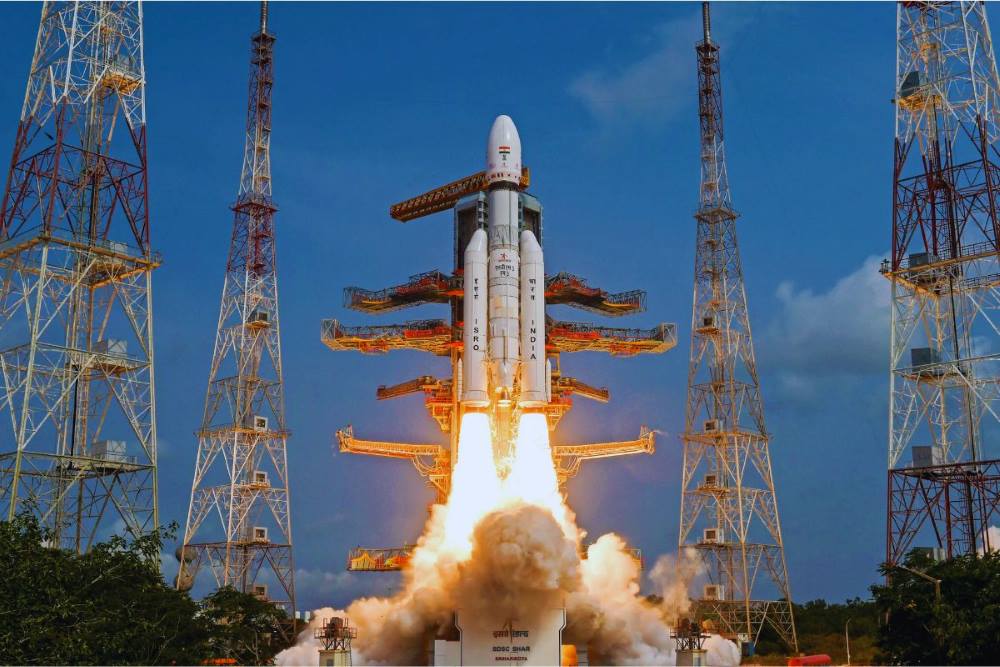Which Fuel is Used in Rockets & How it is Made?

Rocket fuel is the heady brew that sends spacecraft and missiles soaring through space, a dreaded combination of force and accuracy. Such special fuels come in both forms, each fine-tuned for special mission requirements—from the solid fuel to ensure stable thrust to liquid variants for adjustable performance during flight.
The success of space exploration missions hinges on the composition and efficiency of fuels, so rocket fuel becomes not just a substance for propulsion but also a pedestal of technological advancement beyond Earth's atmosphere.
Continue reading to learn more about rocket fuel.

Table of Contents

What is Rocket Fuel?
Rocket fuel is the chemical propellant of rockets that give thrust. The chemical propellant is designed so that controlled combustion happens to produce energetic gags that are afterwards exhausted through a nozzle, resulting in the forward thrust of the rocket.
A solid rocket fuel consists of fragile particles dispersed in a viscoelastic matrix, hence acting as a regulator of the burning rate. Rocket propellants vary in kind due to choices available in the type of rocket engine being used, mission requirements, and, most certainly, efficiency in the vacuum of space.
Which Fuel is Used for Rockets?
The type of rocket engine used applies to different kinds of fuels. Most liquid rockets use hydrogen and oxygen as fuels because of their high energy density and enormously efficient combustion properties. These fuels are stored separately and then flow into a combustion chamber where the controlled combustion takes place to produce thrust.
Solid rockets feature a solid mixture of chemicals, which have to be ignited by flame or an electric current to start burning and produce thrust due to the gases' expulsion.
What Types of Fuel is Used in Rockets?
The two significant fuels used to launch rockets from Earth are solid and liquid. NASA and private space agencies use both types. These include:
1. Liquid Propellants
Liquid Hydrogen (LH2): LH2 is a cryogenic fuel stored at a very low temperature: -253°C. When used with liquid oxygen as the oxidiser, LH2 provides high specific impulse—hence high efficiency—and is often used in upper stages of rockets like the Space Launch System and the Delta IV.
RP-1 (Refined Petroleum-1): It is a very refined form of kerosene. It is used with LOX as the oxidiser in many first and second-stage rockets, such as the Falcon 9 and the Saturn V. RP-1, which is easier to handle and store than liquid hydrogen.
Methane: Liquid methane is rapidly emerging as a substitute rocket fuel to RP-1, as it is a more efficient fuel with lower production costs and is more environmentally friendly. Like hydrogen, liquid methane requires storage and transportation equipment in pressure vessels to remain liquid, such as at very low temperatures or high pressure.
Biofuel: Biofuel is a new rocket fuel specifically for small launches and lighter payloads. It is cleaner than RP-1, and the technology will get more sophisticated and cost-effective as time passes. The first commercial rocket running on biofuel was launched in 2021 by bluShift Aerospace.
2. Solid Propellants
Composite Solid Propellants: These propellants are made from a fuel. Usually a powdered metal or carbon-bearing material, the oxidiser is bonded in a rubbery matrix. The simplicity of design and storage makes solid rockets suitable for applications such as boosters in the Space Shuttle and small satellite launch vehicles.
3. Hybrid Propellants
Liquid/Solid Hybrid: These rockets use a solid fuel with a liquid oxidiser or vice versa. They retain some of the advantages of solid and liquid fuels regarding throttling and safety. A good example is the SpaceShipOne, which burns solid rubber-based fuel with liquid nitrous oxide as the oxidiser.
How is Rocket Fuel Made?
Making rocket fuel is very complex, be it in the knowledge or equipment required, not forgetting the safety precautions one must observe. The following is an overview of how rocket fuel can be made, focusing on solid rocket propellant as the example:
Ingredients:
Fuel: Common fuels for solid rocket propellants include powdered metals like aluminium or magnesium.
Oxidiser: This fuel additive provides the necessary oxygen for combustion. Ammonium Perchlorate (AP) is widely oxidised in solid rocket propellants.
Binder: A binder must hold the fuel and the oxidiser in solid form together for appropriate combustion. One popular binder is the Hydroxyl-Terminated Polybutadiene (HTPB.)
Additives: Several additives can be added to change the burning rate, enhance the energy output, or enhance stability.
Manufacturing Process:
Mixing: The ingredients, such as fuel, oxidisers, binders, and additives, are measured and blended in controlled ratios in a secure environment to avoid accidents due to ignition.
Casting: The prepared propellant slurry is then cast into moulds or substrates. This casting operation allows uniformity for the mixture's ingredients and shapes the propellant grain to its desired form.
Cure: The cast fuel is allowed to cure or set. This step involves controlled heating to enhance the process and ensure the binder is set correctly.
Processing: Additional processing such as machining or surface treatment may be further conducted on the fuel after curing for specified requirements on the rocket motor.
Safety Measures:
While making rocket fuel, you should follow specific preventive measures to keep yourself safe:
Handling: Since rocket fuel ingredients are hazardous, they must be handled carefully to avoid accidents. It may require protective gear like gloves, goggles, respirators, etc.
Ventilation: Work must be conducted in a well-ventilated area or under a fume hood to minimise exposure to potentially harmful gases or particles.
Storage: Better storage of the rocket fuel's components is needed to avoid undesirable reactions or hazards. Fuels, oxidisers, and other chemicals should always be stored separately.
Legal and Regulatory Compliance: The production of rocket fuel may be strictly regulated by law, considering safety and security concerns.
How Does a Rocket Engine Work?
Rocket engines exploit Newton's third law of motion, which states that an equal opposite reaction accompanies every action. They do this by jetting mass from high–speed exhaust gases. Although most rockets create their exhaust by combustion, it all starts with fuel, typically liquid hydrogen or kerosene, mixed with an oxidiser such as liquid oxygen inside a combustion chamber.
This ignited mixture produces high pressure, which pushes the gases out of a nozzle at very high velocity. This reaction force from the exhausted gases acts in the opposite direction to push the rocket. The continuous mass expulsion forms the thrust, which allows rockets to overcome gravity and travel through space.
Do Rockets Use Fossil Fuels?
Fossil fuels like petrol and diesel are ruled out in rockets because of practical difficulties in storing, igniting, and efficiently burning them in vacuum conditions. This has led to the development of more exotic fuels, such as liquid hydrogen and liquid oxygen or solid mixtures of chemicals, tailored specifically for space missions.
They have high energy density with efficient combustion characteristics suited to sustain the immense forces of a space mission.
How to Make Rocket Fuel at Home?
Making rocket fuel at home is quite a complicated and risky process; thus, handling the chemicals and adhering to the safety aspects of their processing is necessary. There are two common types of rocket fuel: solid and liquid propellants.
1. Solid Rocket Fuel:
- Ingredients: The usual composition for solid rocket fuel is a powdered metal fuel, usually aluminium, mixed with an oxidiser, ammonium perchlorate, and a binder, usually hydroxyl-terminated polybutadiene, HTPB.
- Mixing: First, mix together the powdered ingredients in the correct ratios for making solid rocket fuel at home. This is often done in a well-ventilated area or under a fume hood to avoid inhaling fine particles.
- Casting: Mix the fuel and cast it in a mould, allowing it to cure. Curing may include heating to ensure that the binder sets appropriately.
- Safety: All chemicals are potentially hazardous, and caution should be exercised. If necessary, safety gear such as gloves, goggles, and respirator must be worn throughout the process.
- Legal Factors: In many countries, preparing rocket fuel at home is illegal because of apparent safety and security concerns.
2. Liquid Rocket Fuel:
Ingredients: The most common liquid rocket fuel consists of a liquid fuel, usually liquid hydrogen or kerosene, and a liquid oxidiser, mostly liquid oxygen or nitric acid.
Mixing: Mixing liquid rocket fuel at home is quite tricky and dangerous since the chemicals are highly volatile. The mixing ratios and handling methods must be precise to avoid an explosion or fire.
Storage: The fuel and the oxidiser must be stored individually and carefully, for they will react violently in contact under adverse conditions.
Safety: Liquid rocket fuel requires advanced knowledge of chemistry and engineering and specialised equipment for storage and handling.
Rocket fuel is so much more than a propellant or catalyst for exploration. Because of its discovery, humans have attained new heights, and the cosmos is within reach. Whether in solid, liquid, or hybrid form, its development marks a critical juncture between science, engineering, and ambition.
As we further advance these fuels and fine-tune them, so do we propel ourselves into a future where travelling through space will no longer be a dream but part of everyday life.
















